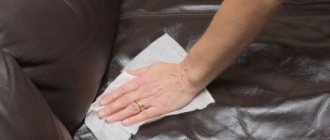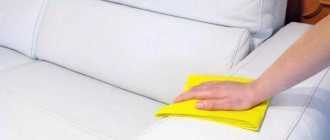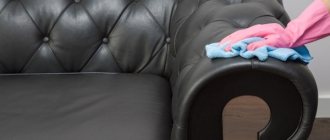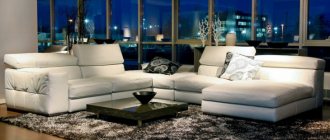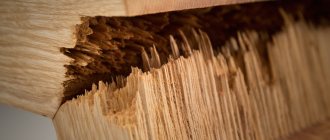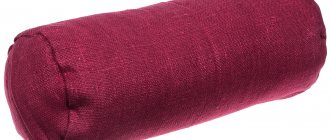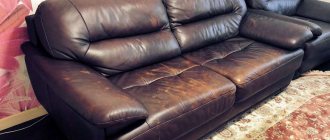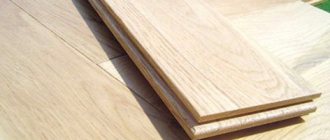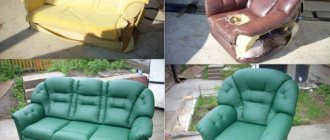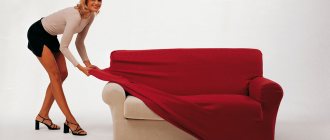Leather furniture in the interior is a sign of luxury and material well-being. They look impressive in an expensive design and add bright accents to a familiar interior. But this is not all of their advantages. Leather models are also the most durable. Thanks to the wear resistance of the upholstery, they can be placed in any room: living room, hallway, corridor, office, loggia and even kitchen. Leather sofas are designed more for mass use and are not very comfortable to use for sleeping, so placing them in a bedroom or nursery is not relevant.
To preserve the appearance of any upholstery, careful and timely care is required, as well as the creation of all conditions for proper operation. But in some situations, the appearance of defects even on the most wear-resistant upholstery cannot be avoided. Therefore, today’s tips for restoring leather upholstery couldn’t come at a better time.
What is “liquid skin”? The most used types from manufacturers
With the help of modern technologies, you can carry out minor repairs to leather products right at home.
“Liquid skin” is a polymer mixture based on alcohol and water. The sticky adhesive base and rubber resin included in the product when repairing leather products help the mixture to firmly adhere to the top layer, forming an elastic consistency.
Liquid leather is a paint that imperceptibly seals holes in the skin; it is a heavy-duty polymer based on water and alcohol.
After hardening, the restored area is practically no different from the general surface. In addition, “liquid leather” retains the properties inherent in natural material.
“Liquid skin” is very easily absorbed into the material, and within a day a scratch or any other damage will become invisible
Another component of this unique product is dye. Today, manufacturers offer a wide range of colors, which allows you to choose the desired shade to match the color of the furniture. When working with complex colors, mixtures can be mixed to achieve the desired result.
Liquid leather is produced in the form of sets with jars of different colors
The main direction of use of the product is the repair of leather products. At the same time, “liquid leather” can be used for products made of leatherette, artificial leather or vinyl. However, it is necessary to take into account the specifics of the material and only small defects can be treated with the product.
Liquid Leather from the manufacturer Liquid Leather
The most popular brands are: Liquid leather (Russia), Saphir (France) and Bradex (Israel). The distinctive features of each brand are clearly presented in the table.
BrandMin. volume Complete drying time Number of colors Product advantages Cons of the product Liquid leather tubes of 125 ml or a set (7 tubes of 20 ml) 2-8 hours depending on the thickness of the layer 7 hardens quickly, easy to apply, repairs through damage scanty color palette Saphir tubes of 25 ml up to 24 hours, depending on the quantity and thickness of layers 50 fluorocarbon resin content ensures long-lasting color, the widest selection of colors high cost Bradex set (7 jars of 8 grams each) 8-12 hours 7 repair kit contains all the necessary tools and materials for repairs small selection of colors
Liquid Saphir leather has a large number of colors to choose from
Repair kit for leather goods “Liquid Leather” from Bradex
When choosing “liquid leather” for repairing leather products, you only need to focus on the availability of the required colors. Otherwise, the composition and quality characteristics of the product of any brand are practically the same.
Liquid leather Flüssigleder is a special putty for repairing small holes, scratches, large cracks on the surface of the leather
Methods for repairing various defects on eco-leather
Think carefully about what you are going to restore, determine the type and scale of the “disaster”. There are several ways to repair an eco-leather product. Which depends on the type of damage. Let's take a closer look at them.
Stains, abrasions, microcracks
If the upholstery has acquired a dull, unkempt appearance over time, it should be thoroughly cleaned of stubborn dirt and stains. For deep cleaning, use concentrated soapy water, then blot dry and gently wipe with 70% alcohol or wine vinegar.
Oil stains can be effectively removed with dishwasher gel: apply it to the stain and leave for 2-3 hours, then remove with a damp cloth.
You can get rid of stubborn stains with gasoline: apply a little on a soft sponge, lightly rub the stain and leave for 30-40 minutes. Remove with a sponge and soapy water.
There are several ways to update worn upholstery on a sofa, ottoman, armchair or car, as well as remove cracks:
- Olive oil. You can take the cheapest one. Apply the oil to the damaged area and rub in in a circular motion with a cotton swab. Wait 1-1.5 hours for the oil to be completely absorbed. Evaluate the result and repeat the procedure if necessary.
- Shoe polish. Colorless will add shine, colored will paint over minor scuffs. It is important to choose the cream strictly to match the color of the product and wait for it to dry completely after painting.
- Permanent marker. Its ink is very resistant to water. Clean the surface from dirt. Carefully outline the microcracks with a marker that exactly matches the color of the product. Wait 20-30 minutes. It can be applied in several layers.
- Pigment varnish. Suitable for environmentally friendly leathers with a glossy surface. Rare shades, for example very bright ones, are obtained by mixing primary colors. Apply to a degreased surface.
- Special paint. Be careful when choosing a shade - if you can't find the perfect match, choose a shade that's a little darker. Before painting, degrease the fragment with alcohol. Spray the aerosol paint with gentle movements from a distance of 20-30 cm, apply the composition from the bottle with a slightly moistened foam sponge, patting. The applied layer must be very thin to prevent cracks from forming. Try not to paint “healthy” areas of the surface; if stains form, remove them immediately with a dry sponge. After drying, the paint can be reapplied.
Try to remove stains on eco-leather immediately. To prevent scratches and microcracks from appearing for as long as possible, regularly clean it with caring compounds: waxes, oils, polishes. This not only protects the product, but also repels dust and dirt.
Scratches, punctures, snags
Scratches and burrs are damage to the top layer of the material. Cats often refuse them. To get rid of scratches and punctures, you can use the following means:
- Nail polish. After cleaning, carefully apply the polish in a very thin line. It can be transparent or similar in color to the coating. For a matte surface - matte varnish, for a glossy surface - regular.
- Touching furniture. The method of action is reminiscent of a clerical queue. You can find it in specialized furniture stores. Shake the bottle vigorously before use. Apply with a brush in 2-3 layers. Wait until completely dry, then wipe the treated area with a soft, damp cloth.
- Furniture wax. It can be soft and hard. Simply rub the scratches with soft wax. If there are a lot of them and they are large, use a spatula or a regular kitchen knife. Leave for 15 minutes, carefully remove excess. Polish the treatment with a cotton cloth. Hard wax is more practical and durable, but working with it requires skills. First you need to melt it, then work on the scratch and the area around it. This must be done quickly, as hard wax hardens within a minute. Finally, sand the treated area well with flannel.
Another special product for masking scratches is furniture colored pencil. It is effective, but does not last long; you must keep it updated.
Cuts, cracks
Cuts and cracks are more complex damages than superficial cuts, as they affect the entire structure of the material, even the filling of furniture or car seats. To eliminate the defect, you can use superglue or universal leather glue. Apply it to the crack using a toothpick or match. Then press the edges tightly for a few seconds. Remove excess glue immediately. If adhesion is noticeable, sand it and apply paint.
If the defect is very large, then glue alone will not be enough; you will need to put on an inner patch. Use eco-leather that is identical in texture, and if you are going to paint the patch, it doesn’t matter what color it is. Using forceps, insert the patch under the incision and smooth it out. Sand the back side with “zero” sandpaper; this will increase adhesion. Using a thin stick, apply glue to the back side of the eco-leather around the cut and, aligning the edges, press firmly with your hand. To make sure that everything sticks evenly, place a load on the patch for 1 hour. If necessary, polish and paint.
Advantages and disadvantages of “liquid skin”
Repair of pressed leather products with liquid leather
The mixture has many advantages. Let's note some of them.
- Easily applied to damaged areas of leather furniture.
- Short drying times.
Leather repair product available in different colors - Polymerization of the mixture takes 15-20 minutes - sufficient time to select the required color scheme. In addition, in case of an error, this time is enough to easily wash off the applied product.
- It is characterized by high strength and elasticity. The skin is able to restore its shape after deformation.
This product does not require heat treatment, has high strength and ductility - The unique formula ensures complete penetration into the structure of the surface of leather furniture and eliminates the possibility of subsequent delamination.
- High resistance to temperature fluctuations allows the use of “liquid skin” in the range from – 35 C° to +70 C°.
- Does not require additional heat treatment.
- Durability – the natural aging period reaches 35 years.
- The product does not contain harmful substances and is absolutely safe for health.
Any repair will still not replace the smooth new surface of a leather sofa, but will extend the life of the product. The
disadvantages of the mixture include the small area of the damaged surface, which can be repaired using “liquid leather”. However, this is the only drawback, according to consumer reviews.
We make an impression of the repaired part for a similar pattern on the entire surface
Leatherette sofa repair: it all depends on the scale of the problem
The first thing to do is to assess the scale and nature of the damage. Typically, people need to tidy up their sofa upholstery for the following reasons:
- spots appeared on it;
- cracks, scratches or tears have appeared on it in one or two places;
- it had completely fallen into disrepair - it was worn out, large holes formed on it.
It is quite easy to deal with stains, scratches and small tears on a sofa made of leather, both natural and artificial. But doing a complete re-upholstery yourself is more difficult.
How and with what to clean a leather sofa at home - 12 ways
Leather furniture looks impressive and is a decoration for any room. There is only one problem - not everyone knows how to wash this furniture correctly so as not to spoil the appearance. It is worth considering all the nuances of cleaning a leather sofa and the rules for caring for it.
Sources
- Puzakov S. Ya. Personnel Directory, in 2 volumes. T. 2; Prometheus - M., 2022. - 448 p.
- Daria Mikhailovna Moshkova Educational and scientific organizations as subjects of financial law; Prospect - M., 2012. - 450 p.
- Irina Anatolyevna Alabastrova Constitutionalism as a legal basis for social solidarity. Monograph; Prospect - M., 2009. - 815 p.
- Citizen and Law No. 08/2011; Gostekhizdat - Moscow, 2011. - 510 p.
- Lovtsov Dmitry Systemology of legal regulation of information relations in the infosphere; Gostekhizdat - Moscow, 2022. - 394 p.
Manufacturing process
Eco-leather is a two-layer material , the bottom layer of which is made of fabric, and the top layer is a layer of polymers; they give the appropriate texture and the desired color. Cellulose, polyethylene, rubber, and protein substances are used to make the polymer layer. The United States was an innovator in the production of eco-leather, and soon Japanese specialists began to develop developments in this direction.
Most often, the following materials are used for the base :
- cotton is a natural fabric obtained from cotton;
- polyester is a synthetic fabric made from polyester fibers.
The top layer is best made from pouleritan, a rubber substitute. The bulk of it in industry is used for the production of shoe soles and car tires. This material is also used in the production of glue, sealant, paints and the like. The advantage of polyurethane is its high wear resistance and durability.
In its structure, this material has a porous structure and allows air to pass through , which improves the properties of eco-leather. In addition, polyurethane eco-leather is completely safe and free of chemical odor. The characteristic “leather” pattern on the surface of the material is obtained under high pressure. You can distinguish eco-leather from natural leather by the reverse side of the product. The woven base immediately reveals its artificial origin. In addition, eco-leather cannot be warmed up with the warmth of your hand; it always remains cold.


